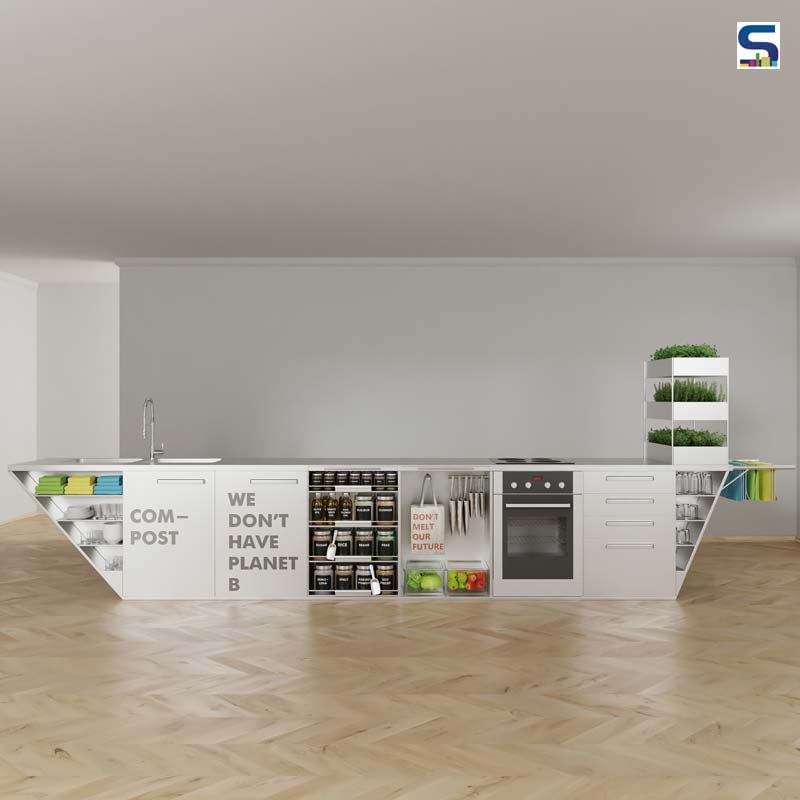
Evoked by the current global crisis of climatic change and the rising generation’s demand for sustainable standards of living such as Fridays for Future, Vienna-based product designer Ivana Steiner decided to pay her share to green living through the Zero Waste Kitchen. Intrigued with the idea to craft a kitchen that would meet zero waste requirements, Steiner turned to Margarete Schutte-Lihotzky’s 95-year-old Frankfurt kitchen. Designed in 1926, the kitchen was built to rationalize daily life by making it more efficient, less time-consuming and hygienic. “It was around the time when housewives had started working outside and the household work had to be kept very efficiently in the kitchen. Every move in the Frankfurt kitchen is at a minimal distance,” informs the Austrian designer. Scroll down to know more about the Zero Waste Kitchen on Surfaces Reporter (SR)…
.jpg) Top: The Zero Waste Kitchen draws inspiration from Margarete Schutte-Lihotzky’s 95-yearold Frankfurt kitchen; Above: The kitchen houses glass containers, baskets for fruit and vegetables, a worm box, storage space for multi-purpose jars for dairy products, linen bags and pouches, and a vertical herb garden.
Top: The Zero Waste Kitchen draws inspiration from Margarete Schutte-Lihotzky’s 95-yearold Frankfurt kitchen; Above: The kitchen houses glass containers, baskets for fruit and vegetables, a worm box, storage space for multi-purpose jars for dairy products, linen bags and pouches, and a vertical herb garden.
The inception
The kitchen by default generates waste and according to Steiner, it is the perfect place in a house setting where one can help in cutting back waste production. Zero waste is the need of the hour. The designer architect rigorously conducted researches, where she explored six unpacked shops in Vienna. Upon doing extensive research, she realized that an average European produces nearly 580 litre of waste a year. She formed a zero waste focus group where she connected and networked with people who live with zero-waste. Mingling with like-minded green warriors helped Steiner to draft prototypes for the kitchen. Drawing inspiration from the zero waste community’s minimal lifestyle, Steiner decided to minus upper cabinets and crafted an ergonomically minimalist design out of recycled materials for her Zero Waste Kitchen.
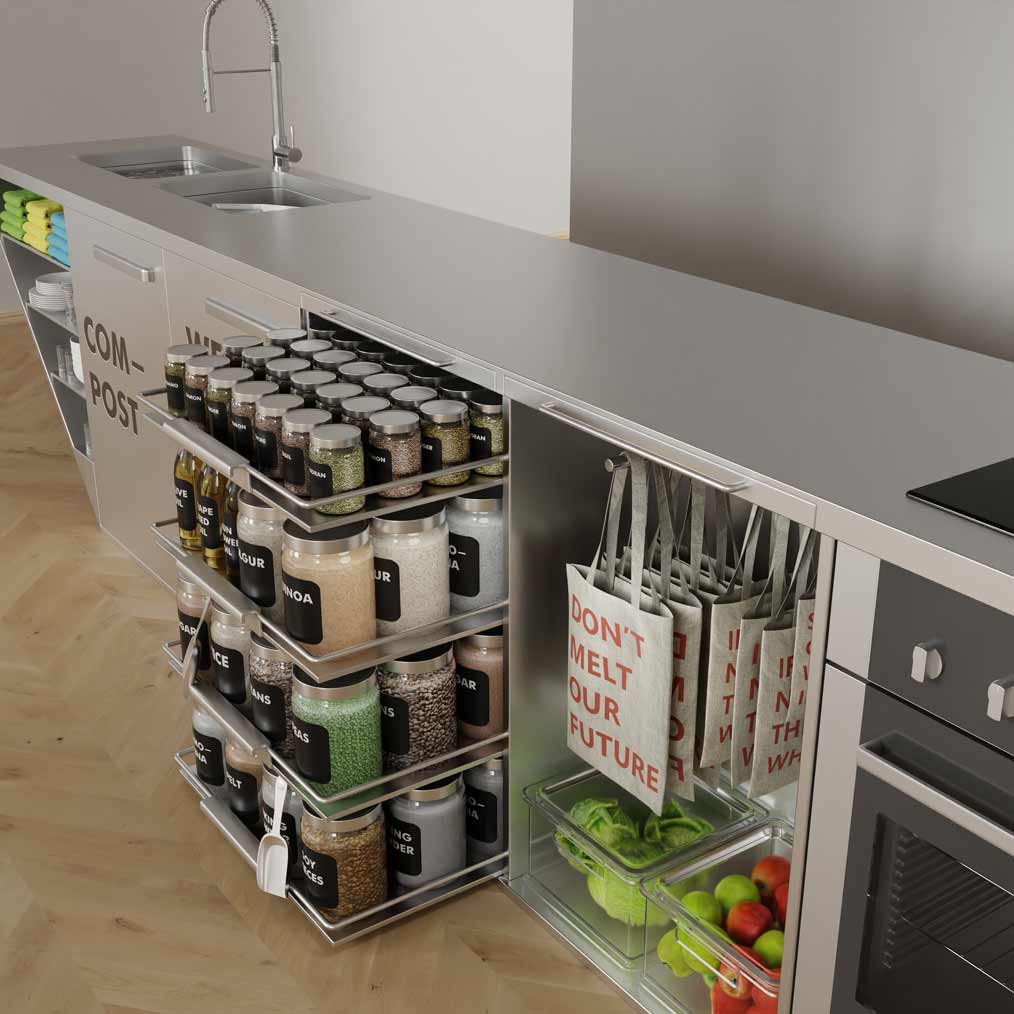 Steiner decided to minus upper cabinets and crafted an ergonomically minimalist design out of recycled materials for her Zero Waste Kitchen
Steiner decided to minus upper cabinets and crafted an ergonomically minimalist design out of recycled materials for her Zero Waste Kitchen
Best of both worlds
Crafted from recycled materials, the Zero Waste Kitchen is an entry-level model for people who want to adopt a zero-waste lifestyle. Despite being made out of recycled stainless steel and recycled glass, the kitchen is expected to have a shelf life of nearly 150 years. “Steel scraps are collected and then recycled. After multi-recycling, nearly 4 tonne of new steel products are produced from one tonne of steel,” she adds. Recycled steel can be further recycled several times without hampering the quality of the material.
Steiner designed the kitchen keeping in mind its spatial factor (a large table) and its visual appeal. “The idea was to create a table with beveled side edges that should be accessible from every side,” she continues. Elements are built up to 60cm X 60cm and can be bought individually and built into existing kitchens. She suggests that if the kitchen is no longer required, it can be upcycled as a workshop bench.
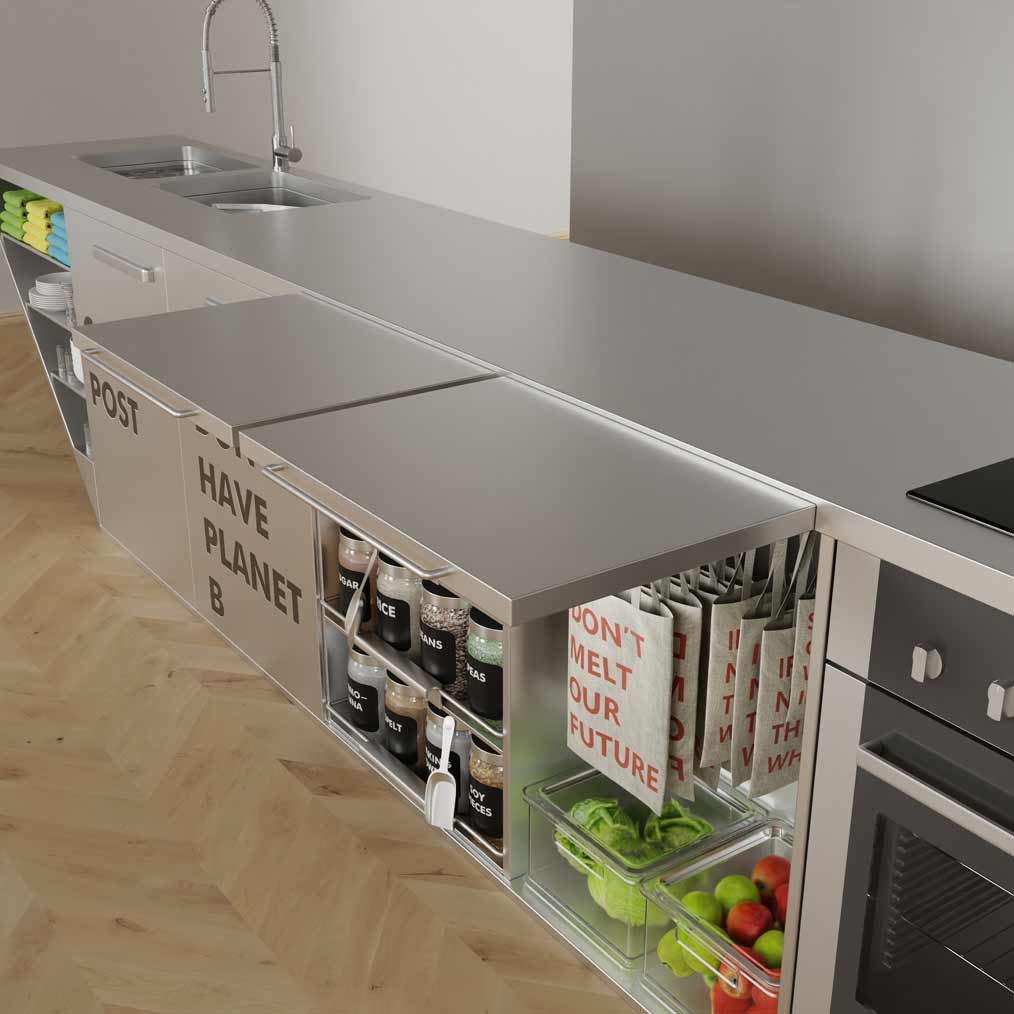 The Zero Waste Kitchen functions as a large table where you can gather around to cook or have meals.
The Zero Waste Kitchen functions as a large table where you can gather around to cook or have meals.
The Zero Waste Kitchen functions as a large table where you can gather around to cook or have meals. The lean structure of the kitchen houses glass containers, baskets for fruit and vegetables, a worm box, storage space for multi-purpose jars for dairy products, linen bags and pouches, and a vertical herb garden. In case the kitchen space lacks light, Steiner suggests installing a daylight lamp to keep the vertical herb garden alive. Humus regularly born out of the worm box can be used for the herb garden.
A stainless steel compost container is positioned under the sink. Steiner installed the worm box with the aim to convert organic waste from worms to humus. Upon researching, she learned that the proportion of humus that is produced is sufficient for house plants. She informs, “Only things which cannot be decomposed in the worm box are bones, citrus fruits and garlic. Citrus fruits are not consumed in the zero-waste lifestyle as they are not regional fruits.”
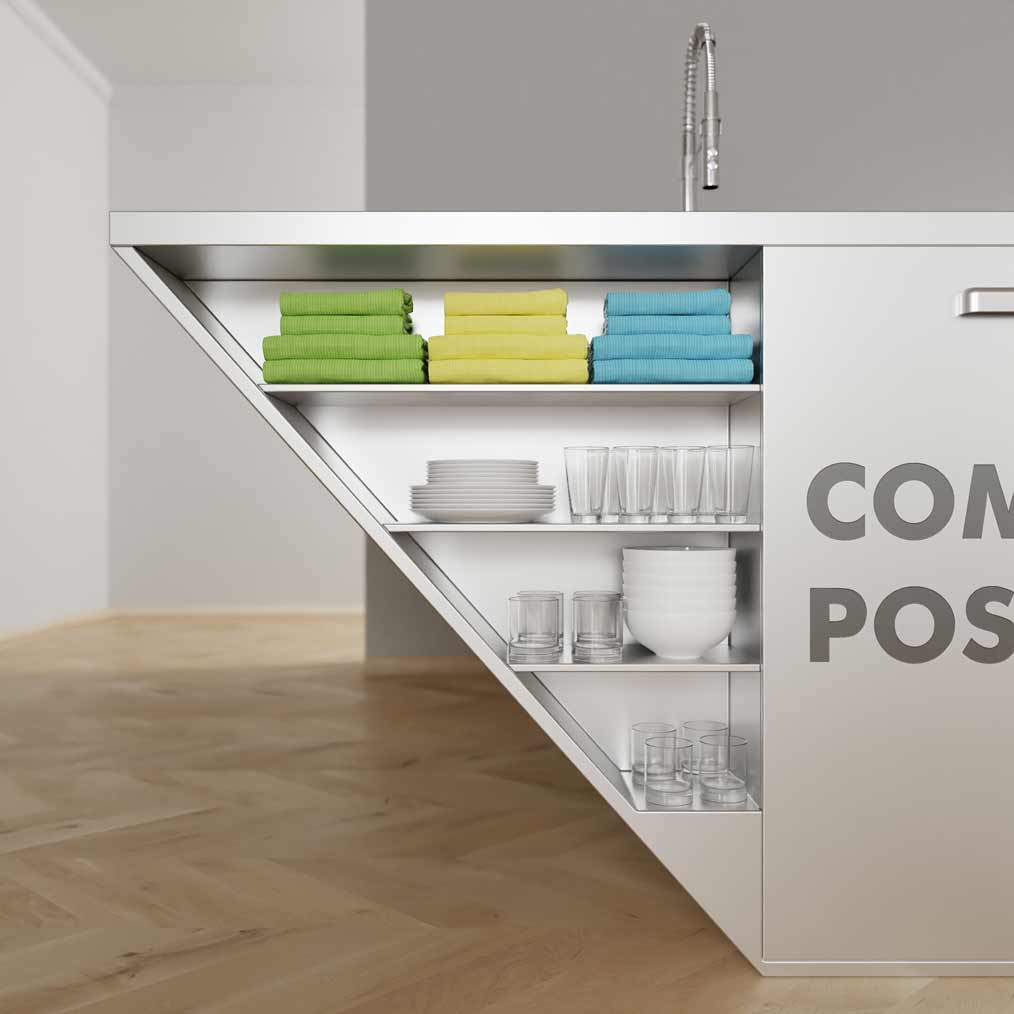 A tumble dryer is essential for the Zero Waste Kitchen, which helps in eliminating kitchen rolls and serviettes and facilitates in drying out textile wipes which can be used until worn out
A tumble dryer is essential for the Zero Waste Kitchen, which helps in eliminating kitchen rolls and serviettes and facilitates in drying out textile wipes which can be used until worn out
Steiner decided to incorporate a tumble dryer as she realized this concept is missing in today’s kitchen. According to her, a tumble dryer is essential for the Zero Waste Kitchen, which helps in eliminating kitchen rolls and serviettes. Divided into three groups depending on the purpose of their usage, namely for products, hands and cleaning surfaces, the tumble dryer facilitates in drying out textile wipes which can be used until worn out.
To store parts of half-eaten or half-cut fruits, beeswashes are used instead of aluminium. The kitchen also offers two pull-out elements which can be used for baking bread. To save electricity, the kitchen has eliminated the dishwasher. Steiner urges the need to wash dishes manually. Each of the two sinks allows the user to wash the dishes with water in dishwashing liquid and rinse-wash later in the clean water sink. A water jug is provided to collect the rest of the water, which can be used to water the herb garden. Based on the outline of the aluminium chutes from the Frankfurt kitchen which were used to store food, the jug subtly connects the aesthetic chart of the new age kitchen with the utility of the traditional ones.
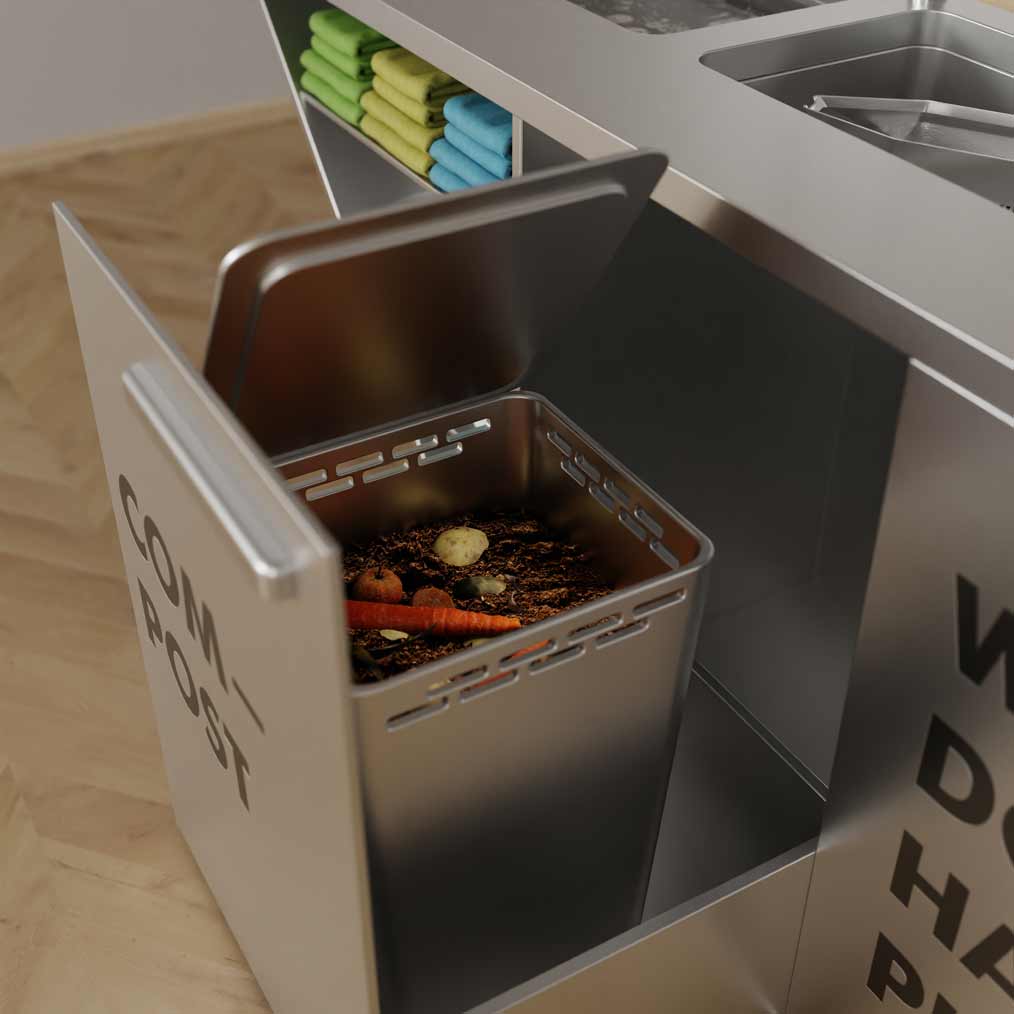 A stainless steel compost container is positioned under the sink.
A stainless steel compost container is positioned under the sink.
Since the kitchen is drawn from the minimalist lifestyle, Steiner decided to not add cabinets to its structure. “Zero waste is based on a minimalist lifestyle where you only keep things that you use every day. Only a limited number of 12 deep plates, 12 flat plates and 12 small flat plates, 12 water glasses and eight wine glasses are used so that not much storage space is required,” she adds.
Inspired by the Fridays for Future initiative, Steiner has stamped ‘There is no planet B’ and ‘Don’t meld my future’ slogans on the refrigerator door and textile bags.
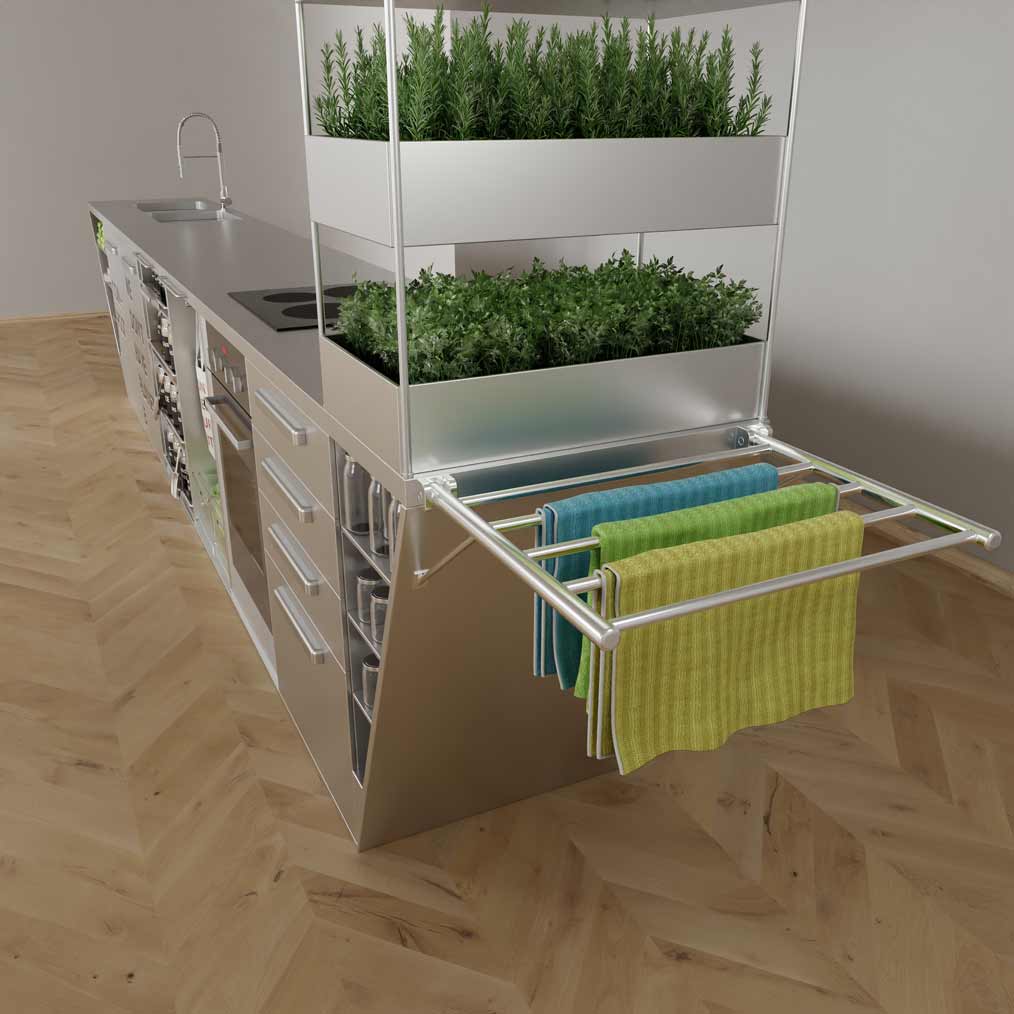 Humus regularly born out of the worm box can be used for the herb garden.
Humus regularly born out of the worm box can be used for the herb garden.
The road ahead
With the aim to curb the current climate crisis, Steiner’s Zero Waste Kitchen not only helps in avoiding wastage but also endeavors healthy cooking. She believes, “If we concentrate on fewer, regional foods without packaging, we can actually implement changes in our immediate surroundings.” Steiner sees the kitchen as a political instrument for sustainability. Although not everyone can achieve zero waste, however less waste is better than nothing.
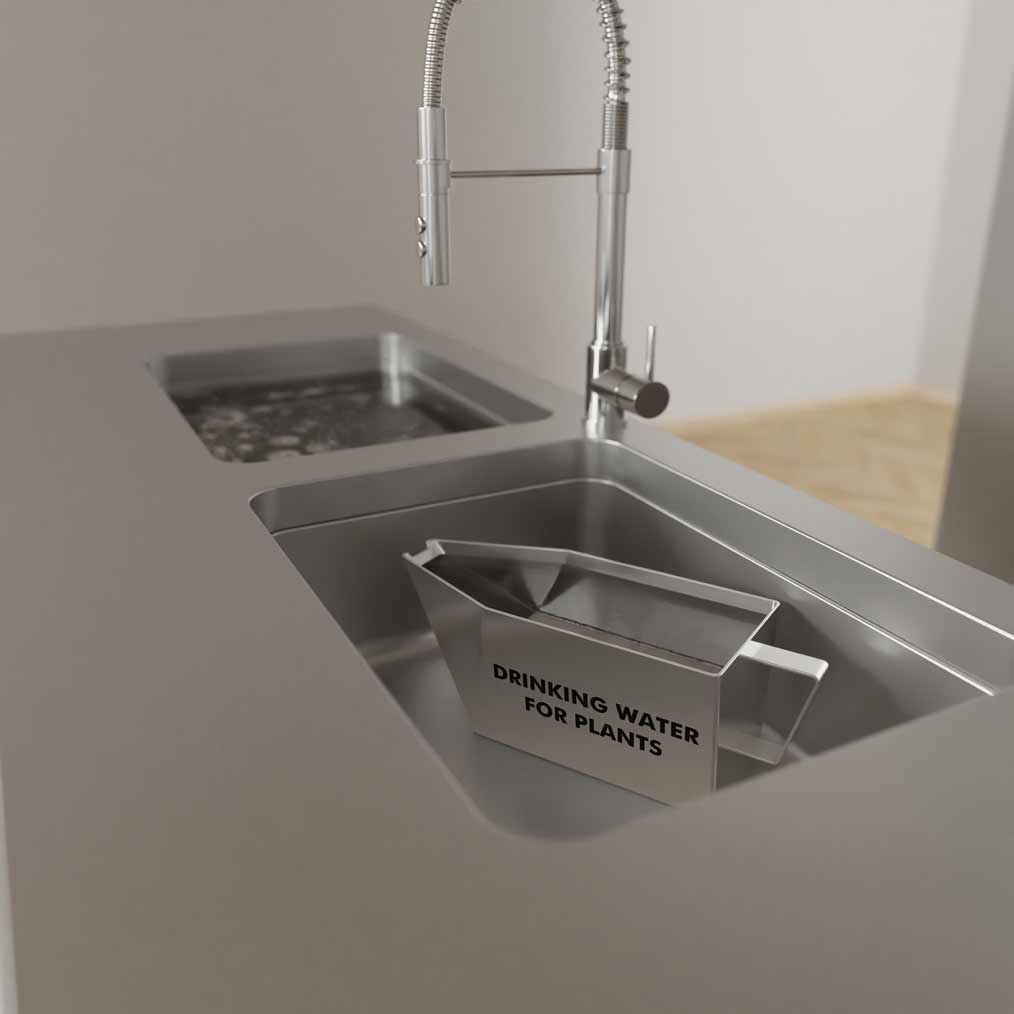 Each of the two sinks allows the user to wash the dishes with water in dishwashing liquid and rinse-wash later in the clean water sink. Image courtesy: Studio Ivana Steiner.
Each of the two sinks allows the user to wash the dishes with water in dishwashing liquid and rinse-wash later in the clean water sink. Image courtesy: Studio Ivana Steiner.
About the designer
Ivana Steiner designs high-quality objects that are conceived and designed in two and three dimensions by combining architecture with graphic design. With over 10 years of experience in design market, she has specialised in luxury hospitality market. At the age of 19, she first became interested and started to read about design, and thereon accomplished projects in luxury hospitality for Kempinsky and Falkensteiner. She owns a design degree in architecture from the Academy of Fine Arts in Vienna, where she learned from Farshid Moussavi and graduated under Kathryn Findlay. Before graduating, she was a student of Zaha Hadid at the University of Applied Arts in Vienna. She additionally graduated in graphic design.
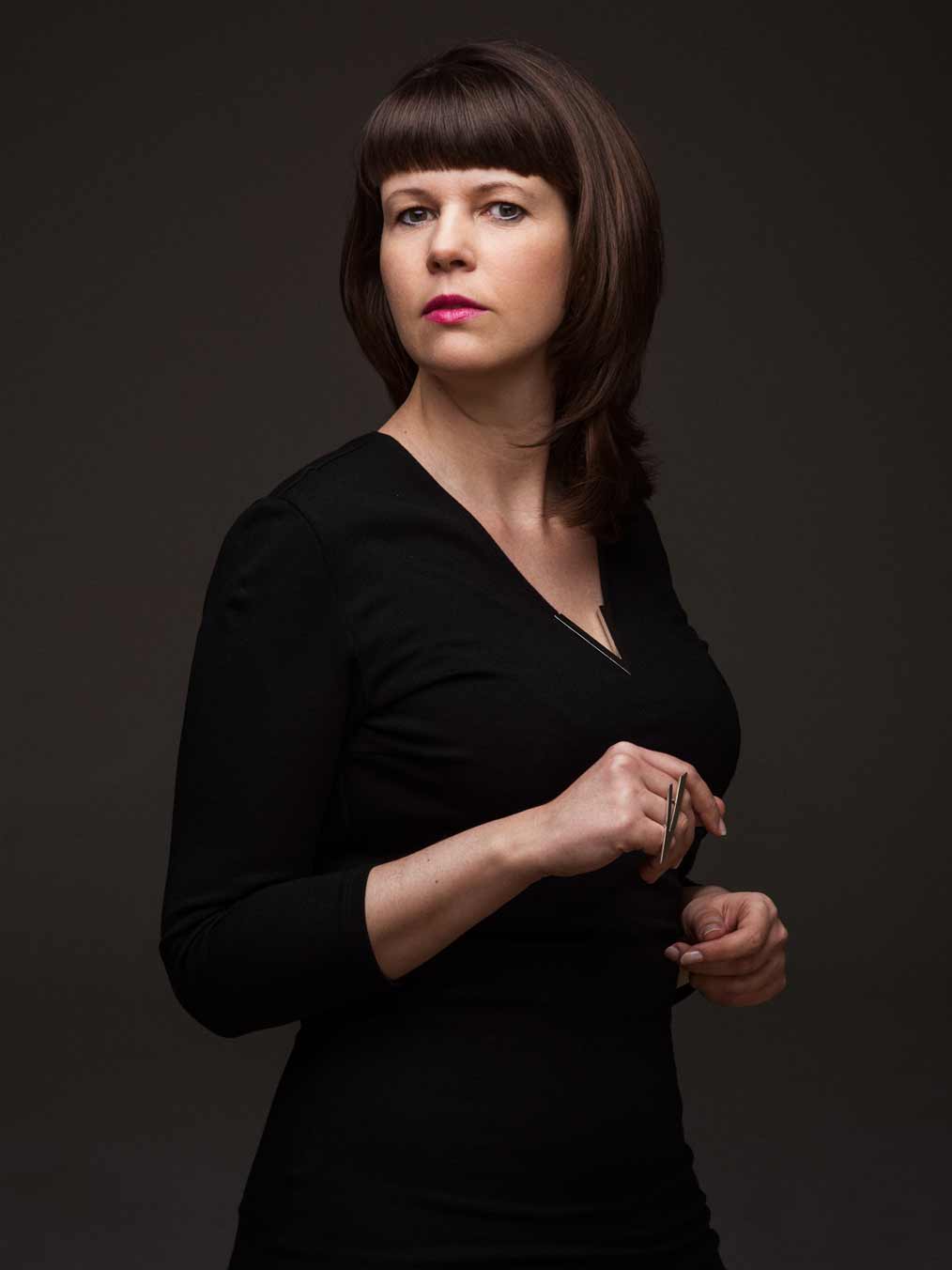
Designer Ivana Steiner